Knowledge Popularization of Science | History of Kenya Green Coffee manufacturer C.Dorman Company Kenya Coffee supply chain
C. Dorman Ltd was founded by Charles and Ellen Dorman in 1950 and quickly became a famous coffee export company in East Africa. Today, the company is still one of the leading exporters in the region. C. Dorman remains firmly committed to providing the highest quality coffee, while also supporting coffee farmers in Kenya, Tanzania and Rwanda by investing in sustainable development programmes-activities that it believes will ensure the livelihoods of coffee farmers and future coffee production in the region.
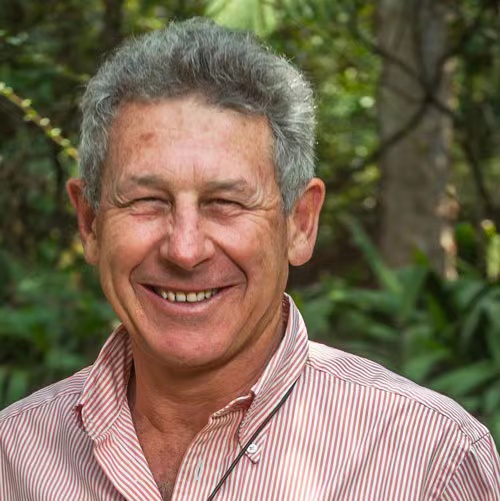
C. Dorman works with Coffee Management Services Co., Ltd. (CMS), CMs is an agronomic, agricultural and production service provider founded in 2006. CMS provides extension services, training in good agricultural practices, financing and access to agricultural inputs to small farmers and manor farmers throughout the region. It also owns and manages primary processing units, dry mills, and acts as a marketing agent to provide producers with stronger negotiating power by promoting direct contact between farmers and buyers.
C. Dorman provides roasters and importers around the world with a wide range of quality and grade products from East African coffee producers. The trade and quality control team in Nairobi has a wealth of knowledge of the region and is able to provide advice and tailored solutions to each buyer's taste. In modern export facilities, they can process and pack coffee according to individual customer specifications, and experienced logistics teams can ensure timely and professional delivery to all parts of the world.
From coffee collection to transportation:
Coffee history
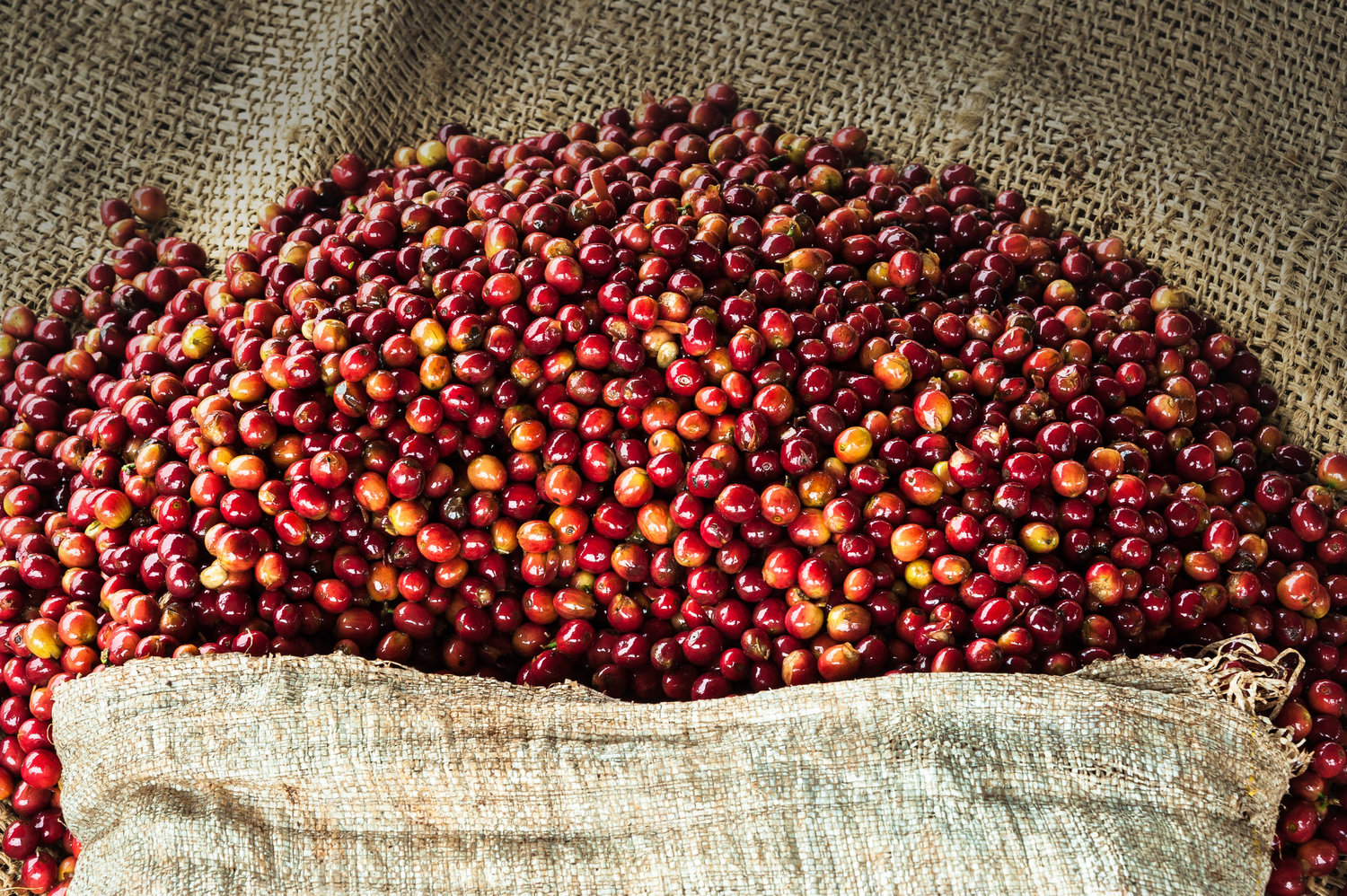
Kenya's first coffee tree was planted by missionaries in 1893. By the 1920s, with the rapid growth of European demand for coffee, coffee had become Kenya's main export crop. As the industry has grown from a colonial experiment to a major industry, experiments on different types of cooperatives and marketing systems have led to the need for regulation and control. In 1933, the Kenya Coffee Commission was established as the main regulator of the coffee industry.
Like many colonial coffee-producing countries, most of the final processing does not take place in the country of origin. Coffee is shipped to Europe or other continents and traded as parchment. Kenyan growers soon learned that buyers only bought the best quality coffee and left the rest unsold in London warehouses. By the 1930s, growers had realized that the existing system did not take their interests into account. They began to sell their coffee to trading companies with offices in Nairobi, which led to the local marketing of Kenyan coffee. In 1937, the Nairobi Coffee Exchange began auctions-a system that has been proved to be particularly effective in improving quality through the bidding system.
Growth condition
The highlands of Kenya have always provided good conditions for coffee cultivation, with even distribution of bimodal rainfall, moderate temperature and fertile volcanic soil. The "super garden" of Kenyan coffee grows in a triangular area north of the capital Nairobi, at the foot of Mount Kenya and the Aberdeen Mountains. In the central province, we found coffee growing counties Nyeri, Kirinyaga and Kiambu. Further east and south, we have Embu, Meru and Machakos. Coffee is also produced in Bungoma, Kakamega, Kisii, the Kenyan side of Mount Elgon and in the Rift Valley in western Kenya.
Rainfall is scattered between the "long rain" from March to May and the "short rain" from mid-October to December.
Kenya has two crops: the (early) fly crop harvested from June to August usually comes from low elevations, while the main (late) crop is harvested from October to March, mainly at higher elevations and higher temperatures.
Production
For ripe coffee, the full production cycle from flowering to fully ripe cherries usually takes eight months. Depending on the variety of coffee, it may take 18-36 months for new seedlings to produce the first crops. For example, the latest Kenyan variety, Batian, has the shortest maturity period of 18 months. Ruiru 11 and other traditional varieties such as SL28, SL 34 and K7 take 24 and 36 months respectively. It takes eight to twelve months from flowering to full maturity.
Harvesting and primary processing
Coffee harvesting and primary processing are usually parallel activities. Harvest, also known as "cherry picking", involves actually picking (handmade) coffee "cherries" from trees. On the day of picking, the cherries are sent to the manor or cooperative factory or "pulping station". Here, cherries undergo primary processing or "pulping" to turn cherries into parchment, a protective inner shell containing raw coffee beans.
The primary processing in Kenya is often described as wet washing or complete washing, that is, the skin and fruit are removed to expose the inner shell or parchment. Before fermenting the sticky parchment overnight, use a machine (usually a disc pulper) to remove some pulp from the skin and its surroundings. The next day, after the enzymatic decomposition of the fruit, it is easy to wash it off with water. Coffee passes through the washing / grading channel-density is an important indicator of quality. The lighter floating parchment is separated from the denser parchment at the bottom.
Finally, soak the coffee parchment in water, then take it out and lay it on an elevated bed or drying table. The parchment is often turned over during the drying process. After a period of drying, the coffee is transferred to the conditioning box, where it is left to rest for several weeks. After that, it was transferred to a commercial grinder for secondary processing.
Secondary processing (milling)
After the primary processing is completed, the beans can be processed at the secondary level. Secondary processing is the process of removing the parchment layer of dried beans, also known as shelling. Raw beans are divided into different grades and categories, and are puffed and bagged for sale.
Warehousing
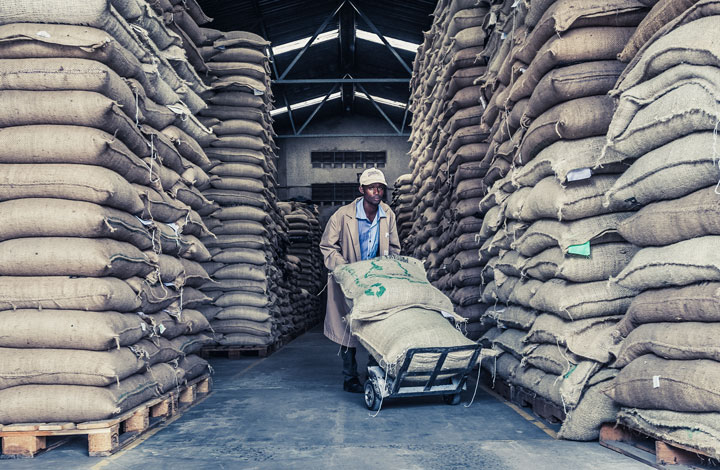
After the coffee is ground, it is stored before sale-either directly to overseas buyers or through auction. At this point, the sale of coffee is taken over by commercial marketing agents contracted with cooperatives and estates. It is the responsibility of the marketing agent to store and guarantee coffee in preparation for auction.
Prepare for auction or direct sale
Coffee prepared by a marketing agent for auction or direct sale. This involves collecting, preparing and cataloging coffee for auction or direct sale to overseas buyers. Samples of each batch are provided to licensed dealers and potential buyers prior to auction or direct sale. There are currently about 50 licensed dealers / exporters.
Sales volume
Kenyan coffee may be sold through two channels
Auction system: during the auction at the Nairobi Coffee Exchange (NCE), the marketing agent is responsible for classifying the coffee to be auctioned, distributing pre-auction samples to licensed dealers, auctioning coffee on auction day and preparing invoices after auction. About 80% of the total coffee sales are sold through the auction system, indicating that the system is the preferred coffee sales channel for most marketers. The season officially opened on October 1, and the auction has been held for a total of 9 months, while raw coffee beans can be sold.
Direct selling: direct selling, also known as the "second window", involves selling coffee directly to overseas buyers. The marketing agent negotiates with the buyer and formally signs and registers the sales contract with the Kenya Coffee Commission.
Buy coffee and pay
After buying the auctioned coffee, the distributor / exporter will pay the marketing agent within 7 days after the purchase. After deducting legal fees, grinding costs and loans owed by coffee growers to financiers (if applicable), marketing agents in turn distribute coffee proceeds to growers. Payment for coffee sold directly shall be made by the buyer upon presentation of the voucher for the FOT sale and the bill of lading for the FOB sale.
Pre-shipment activity
Once the coffee is sold and paid for at the auction, the marketing agent issues an authorization to transfer ownership to the dealer / exporter. The dealer receives coffee from the warehouse and prepares it for export according to the buyer's specifications. The quality of the coffee will be verified by pre-auction samples and, in many cases, additional processing. Dealers / exporters can reclassify, classify and separate coffee according to the specifications of individual buyers. Bulk and bagging are the last export activities before coffee is ready for shipment.
Transport
Coffee is transported to the port of Mombasa by rail or road. Here, it is loaded on board and exported to a specific baking machine buyer or importer.
Important Notice :
前街咖啡 FrontStreet Coffee has moved to new addredd:
FrontStreet Coffee Address: 315,Donghua East Road,GuangZhou
Tel:020 38364473
- Prev
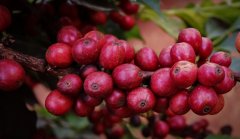
Kenya Coffee Bean Flavor History Development Story| Kenya NCE and its Marketing Operation System
caramel. Pomelo. Coke. ripe tomatoes. Red grapes. Bright. Plum. Sweet. Delicious. apricot. pineapple. Passion fruit. Chocolate. We all know Kenyan coffee is one of the most complex coffees in the world, but they are also the most complex thanks in large part to the country's unique chain of custody, marketing processes and logistics. Kenya has no coffee history in its north
- Next
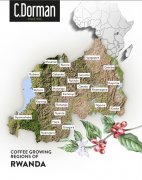
Rwanda Pearl Project| How to drink coffee beans in Rwanda and the development history of its coffee industry
Rwanda Pearl Project| Rwanda's weight in the traditional coffee world is not as good as Kenya and Ethiopia, but in recent years its growing reputation has attracted the attention of international boutique coffee. Rwanda's coffee industry has a story, which is inseparable from government support. Rwandans have been living in Rwanda
Related
- Detailed explanation of Jadeite planting Land in Panamanian Jadeite Manor introduction to the grading system of Jadeite competitive bidding, Red bid, Green bid and Rose Summer
- Story of Coffee planting in Brenka region of Costa Rica Stonehenge Manor anaerobic heavy honey treatment of flavor mouth
- What's on the barrel of Blue Mountain Coffee beans?
- Can American coffee also pull flowers? How to use hot American style to pull out a good-looking pattern?
- Can you make a cold extract with coffee beans? What is the right proportion for cold-extracted coffee formula?
- Indonesian PWN Gold Mandrine Coffee Origin Features Flavor How to Chong? Mandolin coffee is American.
- A brief introduction to the flavor characteristics of Brazilian yellow bourbon coffee beans
- What is the effect of different water quality on the flavor of cold-extracted coffee? What kind of water is best for brewing coffee?
- Why do you think of Rose Summer whenever you mention Panamanian coffee?
- Introduction to the characteristics of authentic blue mountain coffee bean producing areas? What is the CIB Coffee Authority in Jamaica?

